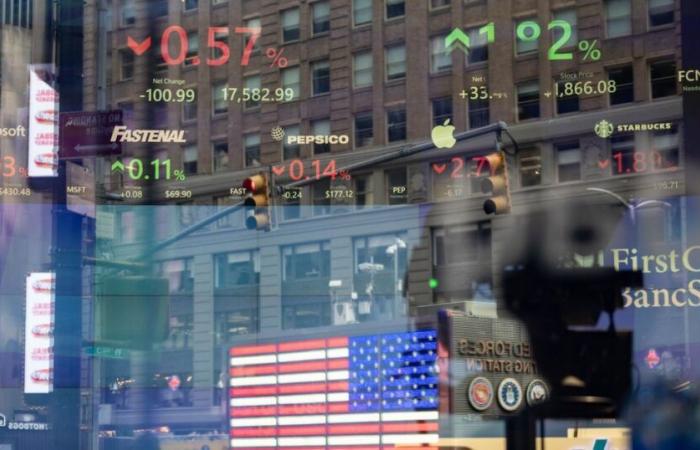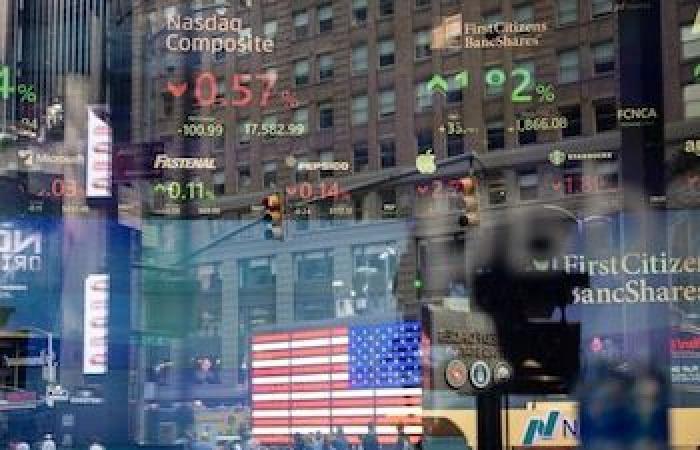As panic fades, investors’ nerves are still tense. At the moment, stock markets have stopped convulsing and the prices of American treasure bonds are no longer in free fall. However, the stock market rates of America, Asia and Europe have barely recovered their poise; On the other hand, the daily falls of 1% or more have become something bland. The index VIX -he “Wall Street Fear” Meterwhich measures the expected volatility using the market price price against it- has fallen since its shocking peak reached fifteen days ago. However, it is in a last level registered in 2022in the midst of a bearish market. The price of oro Beat a record after another. In other words, investors are downloading the risk where they can and preparing for a prolonged fall.
For a group of actions, this is an especially serious problem. “You can only sell what is possessed,” he says Michael Hartnettfrom bank of America, “already end of last year, the fund managers had a ‘raised’ record for US variable income.” In particular, they had opted for a group of technological giants that Hartnett baptized two years ago as the Seven magnificent: Alphabet, Amazon, Apple, Meta, Microsoft, Nvidia y Tesla. Between March 2023 and March 2025, the “Seven Magnificent Longs” continuously led the monthly survey of their bank in which the fund managers were asked to appoint the busiest operation. “It was an accident about to happen”Afirma Hartnett.
Now the accident is underway. From the maximum achieved in December, the weighted average of the shares of the magnificent seven has fallen 25%, much more than the S&P 500 index or any other large stock market. Tesla is the one that has left the worse stopwith its market value reduced by half. Goldman Sachs bank analysts have baptized the group as The “Seven Maleficious”. It is a turnaround for companies that, a few months ago, were the flags of the transformative technology, especially the artificial intelligence (AI), and of the explosive benefits it could report. In addition, their quotes are very important even for passive indices, since they continue to represent more than a quarter of the market value of the market S&P 500. Are market turbulence ending with the most hot investment issue?

Since investors had opted so much for technological giants, any change of opinion could have caused great losses. However, The last weeks have been especially hard. The Erratic White House policy has led investors to question the convenience of investing in US assets. The Commercial warfor its part, it has unleashed the fear of a slowdown that harms the United States rather than other countries. These fears could lead him to sell actions of the Magnificent seven, since they used to embody the generalized belief in American exceptionalism and depend on the demand for consumers around the world.
Besides, A commercial war would seriously harm the multinational business modelswhose vast supply and clientele chains extend by all continents. This is true not only for the magnificent seven, but also, for example, for Chips manufacturers of all the world. Indeed, the Philadelphia semiconductor indexthat follows the companies in the sector, has fallen more than a third From the maximum reached in July. The most recent fall of the actions of Nvidiawhich began on April 15, occurred after the company said that the US government had forbidden to sell its chip “H20″ a China Without an export license. Nvidia warned that new restrictions will reduce their quarterly benefits by 5.5 billion.

Even after the recent collapse of the prices of their actions, Most of the magnificent seven remain unusually vulnerable to new shakes. Three of them -amazon, Apple and Microsoft- have market values about 30 times their underlying benefits; The equivalent ratio of Nvidia is 35; Tesla’s is 123. These values are compared to the “Multiple of valuation” Medium of Nvidia’s actions. These values are compared to a medium “valuation multiple” of 22 for the broader S&P 500 index today, and a long -term historical value of around 19 times.
-High assessments are justified for companies such as American technological giantsthat they hope to keep high rates of growth of benefits for a long time. Most of its value does not come from its current cash flows, but from much greater benefits that they hope to obtain in the future. However, business benefits within many years are subject to radical uncertainty, and those of companies that depend on technological innovation are even more. Who knows how the world will be in 2030 or 2040? As the prices of the shares of companies with high valuations depend much more on this future, they are more sensitive to disturbances.
Meanwhile, It is unlikely that the vertiginous growth of the benefits of the magnificent seven continues forever. In the five years elapsed until the end of 2024, the combined benefits of the group before taxes, interest interest and accounting amortizations grew at an annualized rhythm of 41%. The average forecast of analysts by 2025 is still a very strong 34%. But in the last seven quarters “the second derived from the benefits has been negative,” says Torsten Slok, Apollo, private asset manager, which means that the benefit growth rate has fallen. This could be a sign of slowing the economy or, what is more disturbing for companies whose market value is based on exorbitant benefits, that its trajectory is stabilizing.
Technological giants also have more to fear a recession than in the past. In the past, investors praised their “Light in Capital” business modelsaccording to which they only needed to invest a small proportion of their cash on physical assets and spend little on acquiring new customers. This, in turn, helped justify the high assessments, since it left technological companies with low fixed costs and, therefore, more capable of falling the fall in demand when recessions materialized.

Those days have gone down in history, and Technological giants waste everything from the development of new platforms to investment in physical infrastructure necessary for AI. The trend is accelerated. While in 2019 the Magnificent seven spent just over a third of their cash expenses cash, in 2025 analysts expect almost half. The hope is that this investment drives innovation, better products and even greater benefits, and in a boom it may be so. However, he also leaves technological giants much more exposed than before to a hesitant demand.
The Magnificent seven are also engulfing capital in another way, says James White, of Elm Wealth investment firm. While they themselves are profitable, many of their customers – whether for Nvidia chips or Amazon web services – are smaller and deficit startups that are much below in the AI food chain. Part of the explosive growth of the benefits of technological giants is therefore due to the capital avalanche that venture capital companies and other financial institutions have invested in these companies in recent years. For this to continue, capital must continue to be abundant and relatively cheap. None of that is likely if investors continue to worry about the future and prefer to buy insurance to assume risks. Market turbulence could further damage US business titans.
© 2025, The Economist Newspaper Limited. All rights reserved.







